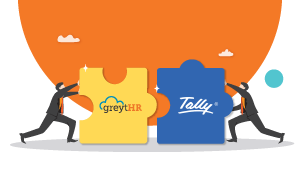The term ‘salary’ means different things to different people. While an employer looks at salary as Cost to Company or CTC, an employee looks at it as Net Pay. The journey from CTC to net pay is an arduous one; one that requires us to factor in all employee benefits (in some quirky cases this would include the number of coffee cups the employee consumes in a day!), contribution to statutory funds and, of course, taxes!
All this number crunching largely depends on the manner in which the salary structure is defined. A good salary structure would lead to a higher net pay without compromising on the essence of CTC whereas a bad one could lead to both the employer and employee coughing up more money.
The intent of the present article is to suggest an optimum salary structure which helps the employee understand how to increase take home pay. Let’s begin.
Traditional structure
The traditional salary structure usually has the following components:
Basic salary
- This is the base salary that the employee is entitled to. Basic salary forms the bedrock of various statutory contributions and in most cases is also used to determine retirement benefits like compensated absences and gratuity. Some employers may limit the salary increment to an increase only in basic pay without adjusting other elements. This salary is fully taxable.
Allowances
- The popular ones here are:
Dearness allowance, which is extended to meet the increase in the cost of living and is modified each year to compensate the employee for inflation. This is fully taxable.
House rental allowance, which is extended to meet the cost of renting one’s accommodation. There are several rules around computing the tax benefit that accrues from this allowance, but it suffices to say that the allowance is not fully taxed. So long as the rent is half of your basic pay, the employee, in most cases, would be entitled to maximum benefit under income tax.
Special ‘allowance’ forms the rest of the salary structure and fills the void between gross salary and other components. This is technically not an allowance and several labor departments have contested that it is another form of Basic Pay. The amount is fully taxable and should also be considered at the time of making contributions to statutory welfare funds.
RELATED: The minefield that is manual payslip generation
Additional Benefits
Employers, especially start-ups, are happy to experiment with their salary restructuring process to make it more beneficial to their employees. However, there exists a thin line between ‘a creative salary structure’ and ‘a salary structure that would not be acceptable for tax advantages’. It is better to weed out components that are on the borderline today, rather than suffering the wrath of government agencies that may ask the employer to contribute towards irregularly computed welfare benefits or taxes.
Nonetheless, there are certain benefits that are provided by the law itself, and employers may consider including them in the salary structure to make it more tax-efficient. Here are some of the components that can be added to the salary structure:
Leave travel allowance, a benefit extended to meet the cost of travel in India when the employee is on leave, can be availed for 2 years in a block of 4. The current block is from the calendar year 2018 to 2021. Cost of travel means the airfare, rail fare or bus fare incurred to make the journey but does not include cost of accommodation and other travel costs. Further, the cost of travel incurred for the family too can be claimed.
Mobile reimbursements vis-a-vis expenses incurred towards official purposes can be incorporated into the salary structure. This amount would not be subject to tax.
Food coupon is a popular benefit extended by many companies. The income tax law exempts Rs. 50 per meal limited to two meals a day, roughly translating to an exemption of Rs. 2,000 per month, for companies working 5 days a week.
Encourage Investments
Employers could also encourage the employees to invest in tax saving schemes which give them benefits under Chapter VI-A of the Income Tax Act. An employee could aim to invest upto Rs. 200,000 into various savings schemes and even at a 20% tax bracket, this would mean a benefit of Rs. 3,300 per month. It is quite natural that the achievement of this number itself may be quite hard given that it represents close to a quarter of the gross salary earned for those in the 20% tax bracket. Again, the amount of investment depends on the net take home pay and for those wanting to invest to save taxes (and thereby increase net take home), this would be the proverbial chicken-egg scenario.
A few caveats
Most of the benefits under tax laws are subject to the availability of adequate documents and are limited to amounts prescribed. A ‘benefit’ given beyond what is legally permissible could result in the employer paying tax on the same. Further, it is important to know that certain advantages extended to employees could also be brought within the tax net, if it is not purely official in nature. For example, a motor car owned by the company, but used by the employee, could be subject to perquisite tax in the hands of the employee.
In conclusion
The combination of a sound investment plan together with a favourable salary structure will go a long way in helping employees take home more and thereby add more smiles along the way.









